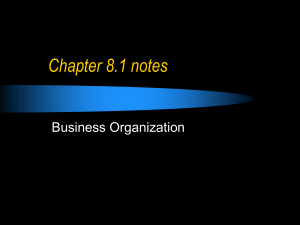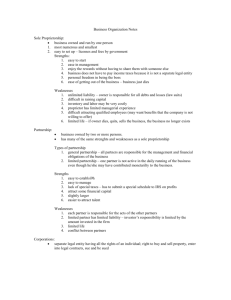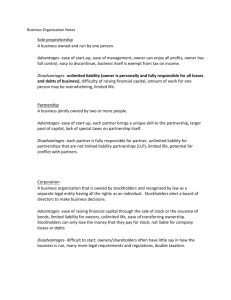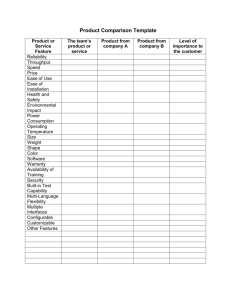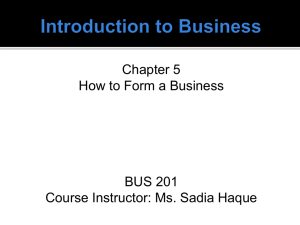SSEMI4 – Organization and Role of Business
advertisement
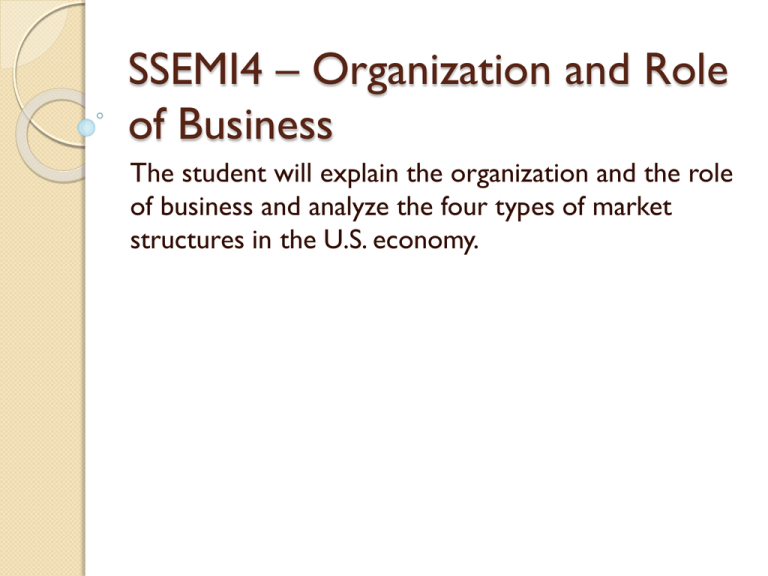
SSEMI4 – Organization and Role of Business The student will explain the organization and the role of business and analyze the four types of market structures in the U.S. economy. Standards I can compare and contrast three forms of business organization-sole proprietorship, partnership, and corporation. I can explain the role of profit as an incentive for entrepreneurs. I can identify the basic characteristics of monopoly, oligopoly, monopolistic competition, and pure competition. Sole Proprietorship A business owned and run by one person. Advantages Ease of start-up Ease of management Owner can enjoy all profits Owner has full control Easy to discontinue Business itself is exempt from tax on income Disadvantages Unlimited liability – owner is personally responsible for all losses and debts of business Difficulty raising financial capital Amount of work for one person may be overwhelming Limited life Partnership A business jointly owned by two or more people. Advantages Ease of start-up Each partner brings a unique skill to the partnership Larger pool of capital Lack of special taxes on partnership itself Disadvantages Each partner is fully responsible Unlimited liability for partnerships except limited liability partnerships (LLP) Limited life Potential for conflict with partners Corporation A business organization that is owned by stockholders and recognized by law as a separate legal entity having all the rights as an individual. Advantages Ease of raising financial capital through the sale of stock or issuance of bonds Limited liability for owners Unlimited life Ease of transferring ownership Disadvantages Difficult to start Owners/shareholders often have little say in how the business is run Many more legal requirements and regulations Double taxation Entrepreneurs Willing to risk their own resources in order to sell them for profits. Successful when they provide consumers with goods and services that consumers highly value. Successful Entrepreneurs Willing to assume risk; high risk, high rewards Have unique skills that help them develop: ◦ New products ◦ New cost-cutting production methods ◦ New ways to serve consumers Discipline to work long hours to achieve their goals. Monopoly A market structure in which there is a single supplier of a good or service for which there are no close substitutes Oligopoly A market structure in which a few, relatively large firms account for all or most of the production or sales of a good or service in a particular market. Barriers to new firms entering the market are high. Produce homogeneous products Produce heterogeneous products Monopolistic Competition A market structure in which slightly differentiated products are sold by a large number of relatively small producers Barriers to new firms entering the market are low. Pure Competition A market structure in which a large number of relatively small firms produce and sell identical products There are no significant barriers to entry into or exit from the industry. Price takers Will earn only normal profits in the long run
